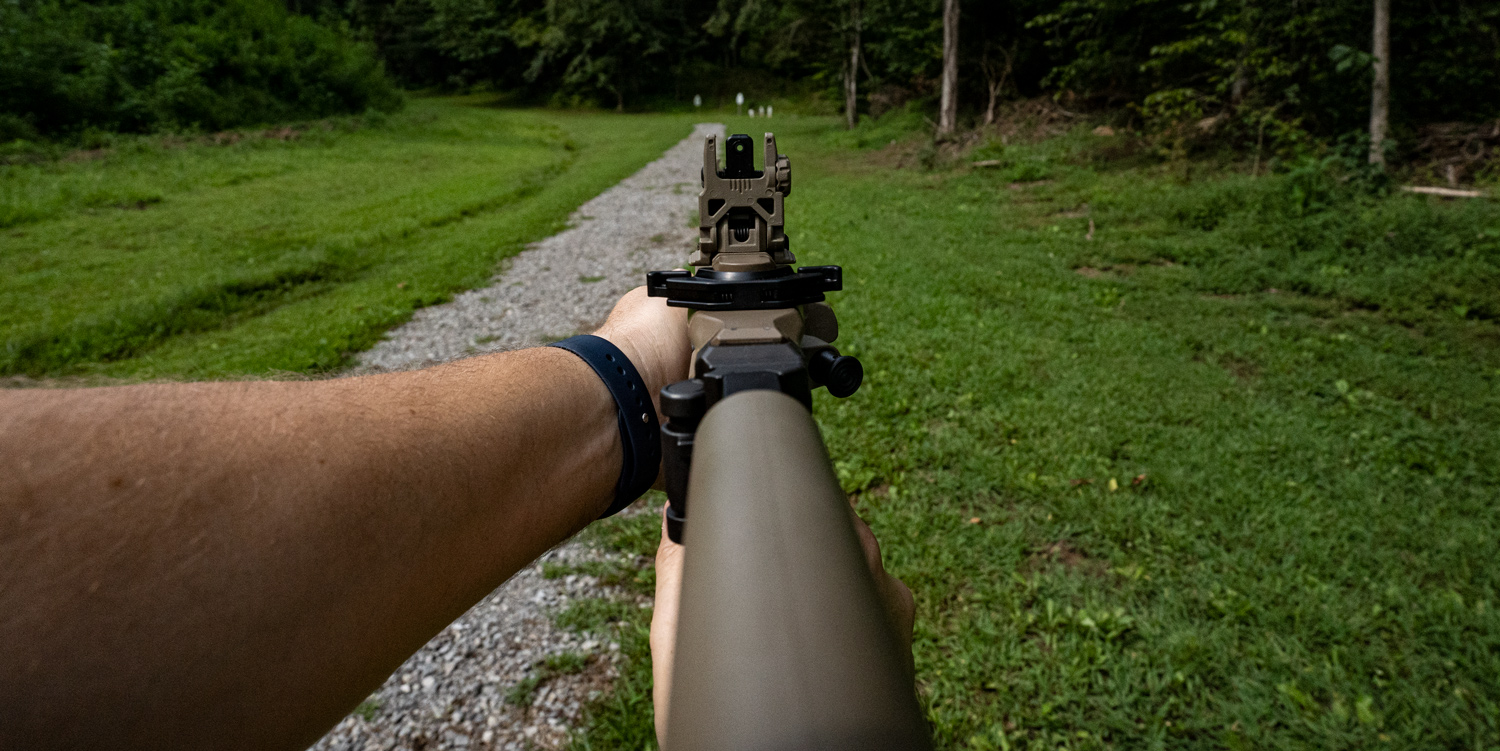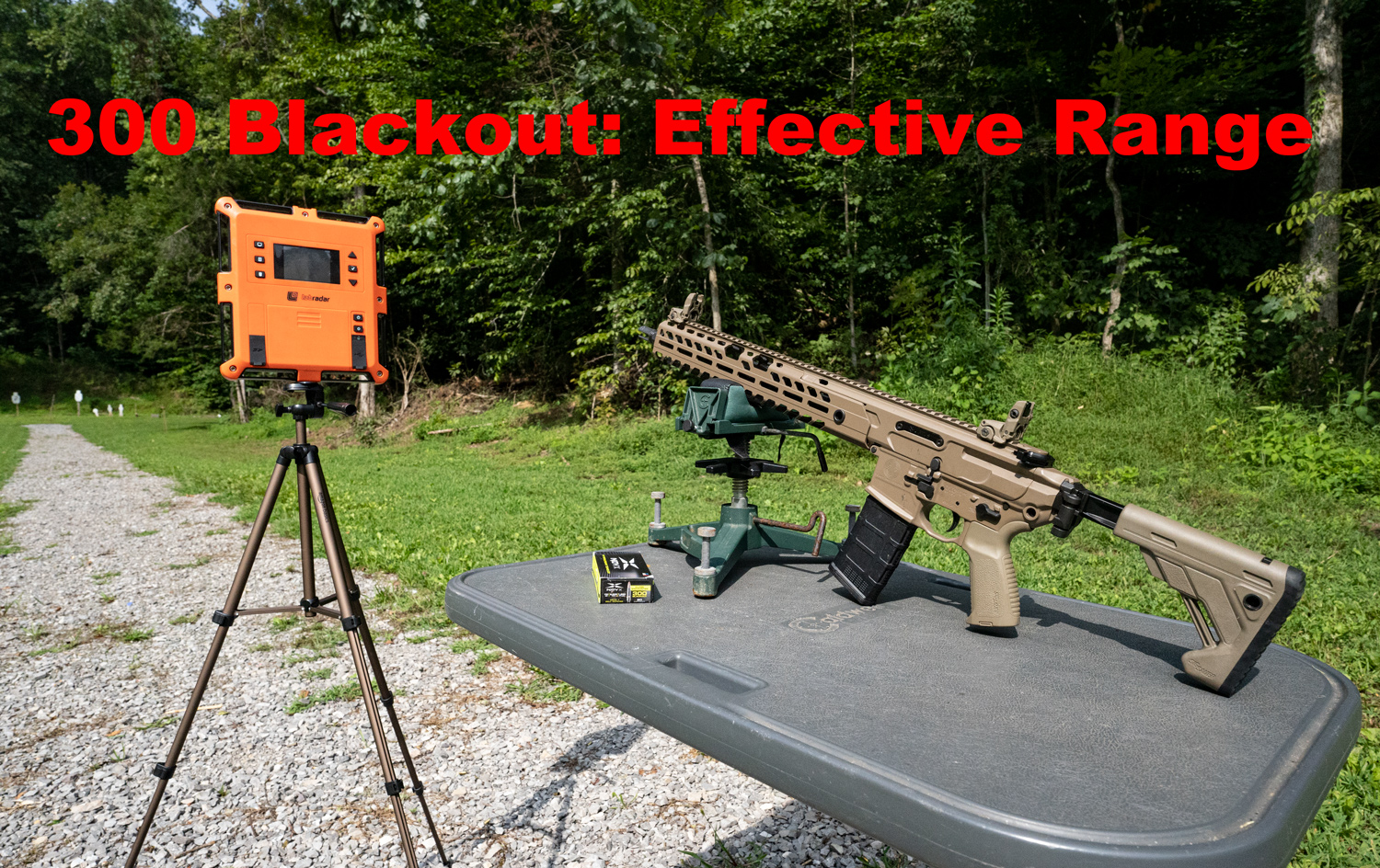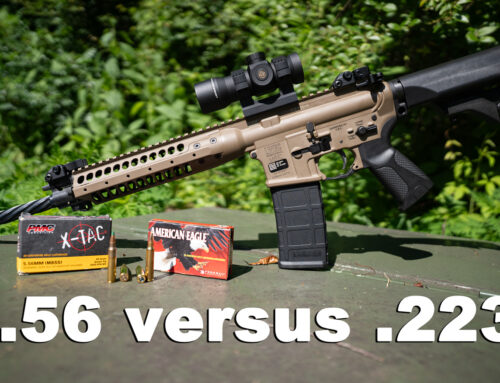Advanced Armament Corporation developed 300 AAC Blackout, also known as the 300 Blackout or 300 Blk, for use in the M4 carbine. The M4 carbine itself was designed for one very specific application: neutralizing whichever threats a member of the United States Armed Forces is tasked with neutralizing.
According to the U.S. Army, the maximum effective firing range of the M4 carbine is 600 meters (656 yards) if you are aiming at an area, or 500 meters (547 yards) if you are aiming at a specific target. Of course, these data presume that the M4 carbine is chambered for the 5.56×45. But we want to know the effective range of the 300 Blackout, an altogether different cartridge which performs more like the Russian 7.62×39 than it does the 5.56.
What Is “Effective Range”?
According to the U.S. Department of Defense, “maximum effective range” means “the maximum distance at which a weapon may be expected to be accurate and achieve the desired effect.” In the U.S. Army’s case, “desired effect” is the neutralization of an enemy
But here is a key point to keep in mind: Our Army considers impact energy as weak as 60 ft lbs to be adequate to produce a disabling wound channel. During international warfare, military don’t consider it necessary to outright kill an enemy combatant. If they you seriously wound them, their contribution to the enemy nation’s war effort will be equivalent to the one they would make if they were dead. (In fact, a wounded soldier actually benefits the opposing military. In that case, their home country must spend resources on their medical care. This is why engineers typical design anti-personnel mines to maim and not kill.)
Civilian Effective Range versus Military
As a civilian, you do not want to merely injure your attacker. You don’t necessarily want to kill them, either. Unfortunately for your attacker, potentially lethal force may be the surest way to ensure that they no longer pose an immediate threat to your personal safety.
In any event, no self-defense expert will advise striking your assailant with only 60 ft lbs of energy. The minimum impact energy typically recommended for personal protection is 220 to 300 ft lbs. For our purposes, let us assume that the average of those two numbers – 260 ft lbs – is adequate for self-defense. (Many will say that “overkill is underrated,” but they will also advise against firing a bullet that is so powerful that it poses a significant risk of overpenetration. That could threaten the safety of an innocent bystander.)
Once we take all of this into account, it becomes clearer what we mean when we refer to the 300 Blackout’s effective firing range from a civilian perspective: It must be the greatest distance at which the cartridge’s bullet is still capable of transferring at least 260 ft lbs of energy to its target.
But what about deer hunting? Well, hunters often advise 10 ft lbs of energy for every pound the quarry weighs. The general consensus among deer hunters is that you want your bullet to hit a whitetail with at least 1,000 ft lbs of energy – not necessarily because all whitetail weigh 100 lbs, but because that much energy on impact usually precedes the terminal ballistics requisite for a fast and humane kill.
What Is the 300 Blackout’s Effective Range?

According to the U.S. Armed Forces, the maximum effective range of the 300 Blackout when fired through a 16” barrel is 460 meters. That’s 503 yards and is the farthest distance at which you can reasonably expect to hit your target with the cartridge. The 300 Blackout may not necessarily retain at least 260 ft lbs of energy at every point throughout that range, however. An intermediate cartridge certainly won’t reach 503 yards with at least 1,000 ft lbs of energy.
Now that we have defined our terms, let’s examine the distances at which several commercial 300 Blackout rounds can deliver the minimum amounts of energy recommended for self-defense and deer hunting. Bear in mind that 503 yards is the greatest distance the round can remain reliably accurate over. (Please note that many of these rounds’ bullets are poor choices for self-defense or deer hunting. We are merely interested in the ranges cartridges meet the respective minimum energy thresholds for those applications.)
| Cartridge | Muzzle Velocity (fps) | G1 Ballistic Coefficient | Max distance with 260 ft lbs energy (yds) | Max distance with 1,000 ft lbs energy (yds) |
|---|---|---|---|---|
| Winchester Deer Season XP 150gr Extreme Point | 1900 | 0.398 | 1015 | 92 |
| Winchester Super Suppressed 200gr Open Tip | 1060 | 0.447 | 911 | N/A |
| Federal Power-Shok 150gr JSP | 1900 | 0.337 | 862 | 78 |
| Federal Power-Shok 120gr Copper HP | 2100 | 0.251 | 543 | 53 |
| Remington UMC 150gr FMJ | 1905 | 0.390 | 1001 | 93 |
| Remington UMC 150gr OTFB | 1015 | 0.680 | 536 | N/A |
| Hornady BLACK 110gr V-MAX | 2375 | 0.290 | 666 | 126 |
| Hornady American Gunner 125gr HP | 2175 | 0.320 | 757 | 114 |
| Hornady Frontier 125gr FMJ | 2175 | 0.250 | 591 | 89 |
| Hornady Custom 135gr FTX | 2085 | 0.274 | 676 | 94 |
| Hornady Subsonic 190gr Sub-X | 1050 | 0.437 | 783 | N/A |
| Hornady BLACK 208gr A-MAX | 1020 | 0.648 | 1349 | N/A |
| Winchester USA Ready 125gr Open Tip | 2185 | 0.272 | 646 | 101 |
| Winchester Silvertip 150gr Defense Tip | 1900 | 0.398 | 1019 | 92 |
| Winchester Super-X Subsonic 200gr Power-Point | 1060 | 0.315 | 636 | N/A |
| Winchester USA Subsonic 200gr Subsonic | 1060 | 0.447 | 911 | N/A |
| Winchester USA 125gr Open Tip | 2185 | 0.272 | 646 | 101 |
Our data spell out two interesting conclusions:
- Any 300 Blackout cartridge meets the minimum energy threshold for self-defense at any point throughout its maximum effective range of 503 yards.
- Of the 300 Blackout cartridges that are capable of transferring at least 1,000 ft lbs of energy to their targets, the average effective range for deer hunting is 94 yards.
There you have it! If you can reasonably expect to hit a threat with a 300 Blackout round, you can count on delivering sufficient energy to neutralize them. But if you use the 300 Blackout ammunition for deer hunting, you’d better be able to get pretty close to your quarry.






Interesting article. I can say that I deer hunted for several years with a .300BLK rifle. The longest distance kill I made with it was about 165 yards. At that distance the deer managed to get about 40 yards from the point of impact. The weight of the deer was 162 pounds. I wouldn’t be confident shooting one past that distance with the .300BLK round.
does a .308 cartridge travel 700 yards???
Yes, the bullet certainly can –
Yes a 308 with an experienced shooter an a proper set up and hand loads can easily achieve 800 yard shots. The 3 crucial factors in this distance in 308 win will be ammunition, rifle and most critical the shooter. I have a ar10 308 win 24 in set up specifically for long range, with hand loads, with varget powder, 600 yards is boringly easy.
Very insightful and well written article. Thank you for writting!